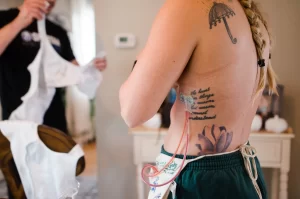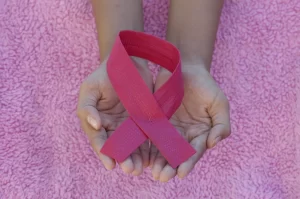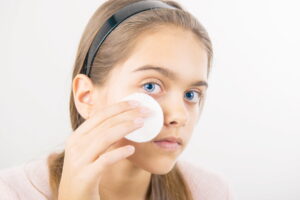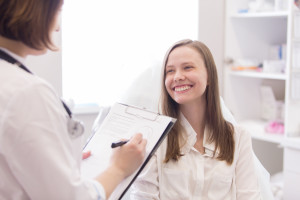By Iris Farrou
05 Oct, 2022
Breast Cancer, Breast health, Lifestyle Tips, Prevention, Queer Health, Women's Health, Young adults & teens
Breast cancer, Breast cancer awareness month Buffalo, Breast Cancer Treatments, Breast Care Treatment Buffalo NY, Mammogram Buffalo NY, New Treatments for Breast Cancer 2022
Thinking about breast cancer treatments is undoubtedly not the most enjoyable activity
one can engage in, but knowing your options can be a revealing and empowering experience. If
you have been diagnosed with breast cancer, it is very likely you will have one or more of these
experts in your treatment team: a breast surgeon or surgical oncologist, who is a doctor
specializing in surgery to topically treat breast cancer; a radiation oncologist, who specializes in
using radiation against breast cancer–also a topical treatment.

Some other experts, who focus more on systemic treatments, are a medical oncologist–a doctor who uses chemotherapy,
hormone treatment, immunotherapy, and other medicines to battle cancer and a plastic surgeon
who–as you may know–is there to reconstruct or repair parts of the body.
Local, or topical, treatments treat the tumor without affecting the rest of the body; surgery
and radiation are local treatments. Depending on the type of breast cancer, its stage, and your
overall health, you may need other types of treatment as well (before or after surgery, or both):
those are called systemic treatments because they reach cells almost anywhere in the body.
Systemic treatments can be given by mouth, put into the bloodstream, or injected in a muscle.
2022 has been a great year for breast cancer treatment, as the FDA approved a new drug
to treat HER2-Low Breast Cancer: trastuzumab deruxtecan (T-DXd). The approval came
through on August 5, 2022 and this therapy is meant to help patients who suffer from HER-2-
Low Breast Cancer that has spread to other parts of the body and cannot be surgically removed.
The clinical trial results for T-DXd were presented by medical oncologist Shanu Modi to this
year’s American Society of Clinical Oncology meeting. The clinical trial was led by Memorial
Sloan Kettering Cancer Center, and according to Dr. Modi, its results redefine how many
patients with metastatic cancer will be treated.
Targeted therapy works by identifying and attacking certain types of cancer cells, but it
doesn’t kill normal cells so its side effects are fewer than other treatments. However, until now
HER2 treatment has not been successful in treating cancer that is HER2-low. During the trial,
patients were given Enhertu (or T-DXd) which targets the protein HER2. The patients who
received Enhertu did noticeably better than the patients who received standard chemotherapy!
The new targeted drug held the cancer of the receivers in check nearly twice as long, and also
increased the survival rate by 35%.
This is wonderful news for breast cancer patients, and a great advancement in breast
cancer research and treatments! To consider if this is the right treatment for you, ask your
medical professional, and seek as much information as possible before you make a decision.
More
By Iris Farrou
05 Oct, 2022
Breast health, Lifestyle Tips, Prevention, Queer Health, Women's Health, Young adults & teens
Best OBGYN Groups in Buffalo, Breast cancer, Breast cancer awareness, Breast cancer awareness month, Buffalo OBGYN, cancer charity, mammogram, When do I need a mammogram
October is best known as the month dedicated to spooky costumes and candy, but it is
also the month dedicated to Breast Cancer Awareness. Apart from skin cancers, breast cancer is
the most common one among American women. Facts show us that 1 in 8 women in the US will
receive a diagnosis of breast cancer in her lifetime, but the really good news is that 65% of cases
are diagnosed at a localized state–meaning that the cancer has not spread past the breast–for
which the five-year survival rate is 99%.

It is also encouraging to hear that there are over 3.8
million breast cancer survivors in the United States alone. The positive facts about breast cancer
assure us that science is working hard to enhance the survival rate for women who are diagnosed
with breast cancer, and is also making great strides to provide successful preventative
techniques.
During the month of October, there are continued efforts to fundraise money for
dedicated breast-cancer research, to support survivors, and to spread awareness and information
to younger women. If you are in Buffalo, NY you may want to consider participating in the
annual Making Strides of Buffalo walk, which is dedicated to making an impact and saving lives,
organized by Roswell Park Comprehensive Cancer Center. This year, the event takes place on
October 22nd, and you can easily sign up for the event on the American Cancer Society’s
website. The event does not have a registration fee, so it is accessible to a greater number of
people.
If you cannot attend the event in person, you can also make a donation, and keep
fundraising going by looking into the Matching Gifts programs: many employers will match
their employees’ charitable donations, or even volunteer hours, thus doubling the impact
individuals make on Breast Cancer Awareness! You can find out directly from your employer if
they are registered for a matching gifts program, or you can use the tool provided by Double the
Donation.
Another great way to support research and other initiatives toward Breast Cancer
Awareness is to create your own fundraising events; many tech-savvy folks set up their own
fundraising pages, or they simply ask their loved ones to collect donations towards this cause in
lieu of birthday, wedding, or anniversary gifts. If you have an online presence, you can easily
bring people together through Facebook or Instagram Live, and even Zoom, to provide support,
share knowledge, and build a community.
Breast Cancer Awareness Month
Fundraising for Breast Cancer: 8 Breast Cancer Awareness Month Ideas to Make an Impact
More
By Iris Farrou
07 Sep, 2022
Breast health, Breastfeeding support, Health Conditions and Pregnancy, Lifestyle Tips, Mental Health, New Moms, Prevention, Procedures, Queer Health, Reproductive health, Women's Health, Young adults & teens
BRCA Gene, Breast cancer prevention, Breast cancer screening, Breast Exam, Breast Exam Buffalo NY, Breast Exams at Home, Buffalo NY, Buffalo OB-GYN, Cancer in women, Healthy Lifestyle, Self-Exam, Self-Examination, women's health tips
It is common practice at your regular OBGYN appointment for your doctor to perform a breast
exam, by using their hands and examining the overall the look of your breasts. Though this is no
substitute for a mammogram, which adult women are advised to have done yearly, it is a useful
method to see whether there are any visible or tactile abnormalities on your breasts. In fact, 40%
of breast cancers were diagnosed because women noticed something unusual about their breasts.

Is this something I can do at home?
Absolutely—and it is a good idea to perform a self-breast examination once every month. Consider it a monthly inspection you deserve, and one that at the very least helps you learn your body better. Using your eyes and hands for this examination, you can develop your own breast awareness and be able to immediately identify changes—should there be any, fingers crossed not!
What do I do?
First and foremost, it is important to choose a time of the month when your breast will not be as tender since this can cloud the results of the inspection. Ideally, during a time when you are not menstruating or ovulating. Secondly, remember you can (and probably should) ask your doctor or nurse practitioner for a demonstration on how to do this at home.
The most effective technique is to start with a visual examination of your breasts. Stand shirtless and braless in front of the mirror, with no-shadow casting light if possible, and place your hands at your sides. Look for any changes in size, shape, possible asymmetry, dimpling, or puckering. Check to see if your nipples are inverted. Then, inspect your breasts in a similar manner but after raising your hands above your head, palms pressed together forming an A shape. You can also lift your breasts and inspect whether the ridges on the bottom are symmetrical. Should you not trust your own vision, or if you have a visual impairment, it’s a good idea to ask a partner, trusted family member or friend, to help you with this.
Is this all?
The visual inspection is the first step. Next, you want to use the pads of your three middle
fingers. If you can’t sense very well with the pads of your fingers you can use your palm or the
backs of your fingers. You can do the tactile inspection in the shower or lying down (that way,
the breast tissue spreads and it’s easier to feel).
Now, take your time, don’t rush, and establish a routine for this part. If you do it clockwise every
time, for example, and in the same order, then after a few times you will be better able to judge
any changes in the pattern of your breasts. The goal here is to feel the depths of the breast using
different levels of pressure—so you can go over the whole tissue. Closest to the skin, use light
pressure. As you go try to feel a little deeper, use medium pressure. Closest to the chest and ribs,
use firmer pressure.
Remember that you are not looking for anything in particular, you are just learning the patterns
of your breasts. So, take deep breaths, take your time, remind yourself this is being done
absolutely for preventative reasons—just like flossing!
More
 Every parent expects their sweet babies will one day grow into hormonal teenagers, with changes in their appearance and their attitude. Some dread this change, but it’s none other than teens themselves who have to deal with their bodies changing, smelling differently, and deal with skin care and acne!
Every parent expects their sweet babies will one day grow into hormonal teenagers, with changes in their appearance and their attitude. Some dread this change, but it’s none other than teens themselves who have to deal with their bodies changing, smelling differently, and deal with skin care and acne!
What Happens to the Skin?
In a single word: hormones. Puberty begins around age 9 or 10, when the hypothalamus releases a gonadotropin-releasing hormone (GnRH). This hormone travels to the pituitary gland, which is a small gland under the brain that produces hormones which control other hormones in the body. When GnHR reaches the pituitary gland luteinizing hormone (LH) and follicle-stimulating hormone (FSH) are released. These two are responsible for the development of the reproductive system. At the same time, the adrenal glands produce adrenal androgens, which cause body hair growth. But the biggest concern is the skin glands, which produce the natural oil sebum. Puberty hormones increase the amount of sebum, which clogs the pores and causes skin care and acne problems.
Proper Skin Care
The first way to deal with acne is natural methods. It’s important to keep the skin clean by washing gently, and regularly, with warm water and a mild soap. Pat dry with clean tissues to reduce the risk of oil transfer between uses. It’s also important keep your hair away from your face for the same reason: oil transfer. With changing hormones, you may notice your body odor becoming stronger. Regular showers are necessary now more than ever, as bathing ensures your hair is kept clean. Fresh pillowcases can also work wonders!
There are numerous over the counter skin care products you can use when washing your face, and it’s a good idea to exfoliate at least once a week. For persistent pimples, you can try drying them out using some isopropyl alcohol on a cotton round. Cleaning your face with a cotton round dipped in alcohol, or using alcohol wipes, is also a great way to dry out some of the excess oil and help your pores unclog.
Dermatological Methods for Skin Care
Some cases of acne may be more serious, and in need of a dermatologist’s assistance. The first mild, topical, medication a doctor may suggest is retinoid drugs gel or lotion form which is to be applied in the evening and prevents clogging of hair follicles. Azelaic acid is another option, a naturally occurring acid produced by a yeast. It has antibacterial properties and has been known for its effectiveness. Salicylic acid is another option, but studies show it’s not as effective. Inflammation and excess skin bacteria can be treated with some mild antibiotics, often used with benzoyl peroxide to reduce the risk of antibiotic resistance.
If acne persists after topical medications, it may be time for oral medications. These are the highest tier of acne treatment, but if you have any concerns about these changes and this process, it is highly recommended you reach out to a medical professional.
More
 As your daughter moves from child to adolescent, to young woman, she will experience a variety of firsts—and so will you. A critical rite of passage in her transition to adulthood, and in her pursuit of optimal health, is her first visit to an obstetrician-gynecologist (OB-GYN) for a routine exam—but when is the right time to take that step?
As your daughter moves from child to adolescent, to young woman, she will experience a variety of firsts—and so will you. A critical rite of passage in her transition to adulthood, and in her pursuit of optimal health, is her first visit to an obstetrician-gynecologist (OB-GYN) for a routine exam—but when is the right time to take that step?
Why Young Women Need Routine Gynecology Exams
Gynecology exams are not only critical for women who are pregnant or looking to become pregnant, or for women who are presenting symptoms of concern. The American College of Obstetrics and Gynecology (ACOG) recommends that all women should obtain an annual screening, and that includes young women. Even if your daughter is not complaining of any health issues, such as painful or irregular periods, she should still receive proactive, regular examinations.
Regular gynecology exams for young women provide:
- A safe space to ask questions and receive information about such topics as sex and body changes from a trusted source.
- Preventive education and dialogue regarding the risks of sexually transmitted diseases and unplanned pregnancy.
- Necessary diagnoses and treatments for women who present with symptoms.
When Should a Young Woman Have Her First Visit with an OB-GYN?
The ACOG recommends that young women should have their first visit with an OB-GYN between the ages of 13 and 15. Ideally, you will want to schedule your daughter’s first appointment after her first menstrual period. At this point in her life, your daughter should be well aware of her changing body and may have questions she’d like to ask you or a doctor.
What Will the First Visit Entail?
Both mothers and daughters should know what to expect from the first visit. Typically, a young woman’s first appointment with an OB-GYN will include a general physical exam and an external genital exam. An internal examination (or pelvic exam) of the reproductive organs will typically not take place until age 21 for women without any health issues. If your daughter who is under the age of 21 is experiencing such health concerns as abnormal bleeding or painful periods, your OB-GYN may recommend a pelvic exam sooner. Also, OB-GYNs typically recommend a Pap smear every three to five years, but not until age 21.
The Supportive Role You Will Play in Your Daughter’s First Exam
Even if she understands what to expect, a young woman’s first gynecological exam may cause her to feel nervous or uncomfortable, which is why it is critical that she has the support every step of the way. Talk to your daughter before the exam. Make sure she understands what to expect and answer any questions she may have. Foster open dialogue and make sure she knows that even if she fears her questions may be silly, that you are willing to answer anything with honesty and respect.
Your daughter may or may not want you to be in the room with her when she has her first exam, but make sure she understands that either way, you are there to support her before, during, and after her first and all future visits with her OB-GYN.
Chuochani, Sayegh and Robinson MD is accepting new patients. Please give us a call today if you’d like to schedule an appointment.
More
 When should a girl start seeing a gynecologist or obstetrician-gynecologist (OB/GYN)?
When should a girl start seeing a gynecologist or obstetrician-gynecologist (OB/GYN)?
Even if you’re not sexually active, the American College of Obstetrics and Gynecology recommends that you go between the ages of 13 and 15, although any time after menstruation and before your eighteenth birthday is fine. If you’re sexually active, go as soon as possible!
And why should you go?
To have confidential discussions about sex, sexuality, menstruation, pregnancy prevention, sexually transmitted diseases—pretty heavy stuff. It may sound like it will be an incredibly awkward experience, but here’s some information that may set you at ease:
- The first appointment is mostly about talking. To begin, the doctor or nurse will ask you questions about your health and lifestyle. They’ll go over your health history, like how old you were when you got your period and if you have any problems with it. They’ll ask about your sexual history, whether you’re sexually active or just thinking about it—and if you are, what birth control you use. They’ll also discuss your lifestyle: do you smoke cigarettes? Do you drink alcohol? Do you take drugs? Do you practice sexual behaviors that might put you at risk for STDs?
- You probably won’t need an internal pelvic exam. Unless you’re sexually active or having a medical issue, your physical exam will be external. The doctor will examine your outside genital area, your abdominal area, and your breasts. She or he is just checking for visible abnormalities, tenderness or lumps in your breast tissue. You shouldn’t need a Pap smear until you’re 21. As for the dreaded stirrups? They’re only there so you have a place to rest your heels and be more comfortable when you’re lying on the exam table. Many practices cover them with something soft.
- If you do need an internal pelvic exam, relax! You may know that this is when the doctor will use a speculum, either metal or plastic, to hold your vagina open so she or he can see if everything looks normal and healthy. Don’t worry—the speculum they use for teenagers is about the size of a super tampon. This part of the exam can be uncomfortable, but it shouldn’t hurt. If it does, speak up! After removing the speculum, the gynecologist will feel inside of you with one hand and press on your abdomen with the other. She’s checking to see if your fallopian tubes, uterus, and ovaries are in the right position and whether they feel normal. If any part of this process hurts, let the doctor know. And throughout, do deep, slow breathing and let your legs relax as best you can.
Remember, your doctor has seen and heard everything.
There is probably nothing you could ask or discuss that your OB/GYN hasn’t dealt with before. And everything you talk about is confidential. So go ahead and ask questions about your anatomy, your period, birth control, different sexual practices and anything else you might be curious or concerned about.
At Chouchani, Sayegh and Bagnarello, we know how strange that first appointment can feel. We’ll do our best to make sure you feel at ease. Please give us a call when you’re ready to make that first appointment.
More





 As your daughter moves from child to adolescent, to young woman, she will experience a variety of firsts—and so will you. A critical rite of passage in her transition to adulthood, and in her pursuit of optimal health, is her first visit to an obstetrician-gynecologist (OB-GYN) for a routine exam—but when is the right time to take that step?
As your daughter moves from child to adolescent, to young woman, she will experience a variety of firsts—and so will you. A critical rite of passage in her transition to adulthood, and in her pursuit of optimal health, is her first visit to an obstetrician-gynecologist (OB-GYN) for a routine exam—but when is the right time to take that step?